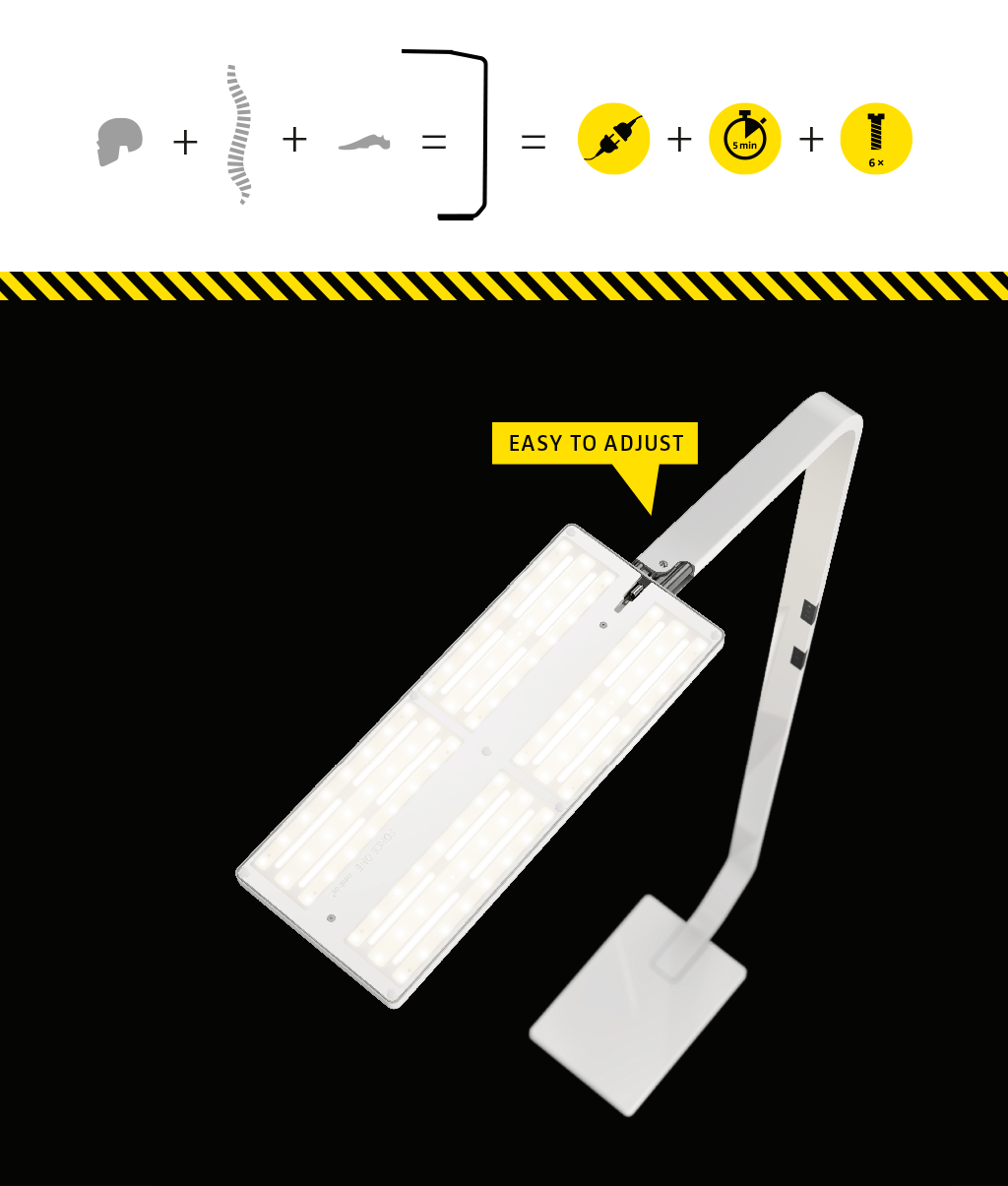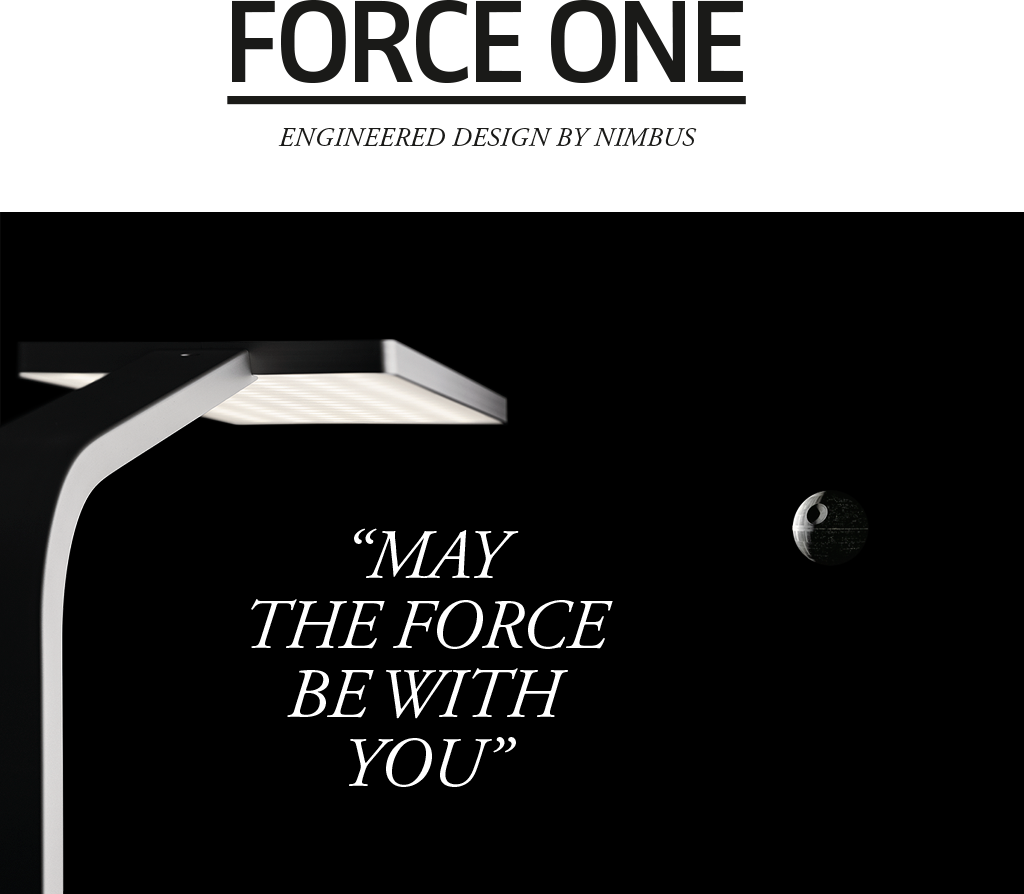
Strong it is, the light side
Strong it is, the light side. Other than in George Lucas’s (soon-to-be) 7-part “trilogy” about heavy-breathing men in face masks and freaks in pyjamas armed with rudimentary light-sabres, our Force One luminaire, as the protagonist of the light side, possesses some real superpowers – enabled by a wide array of sensors that any Jedi knight worthy of the name would have loved to have at his disposal. Not to mention the lumens per watt or DIN-compliance workplace lighting. Composed of head, backbone and base, our trilogy really consists of three parts and no more.
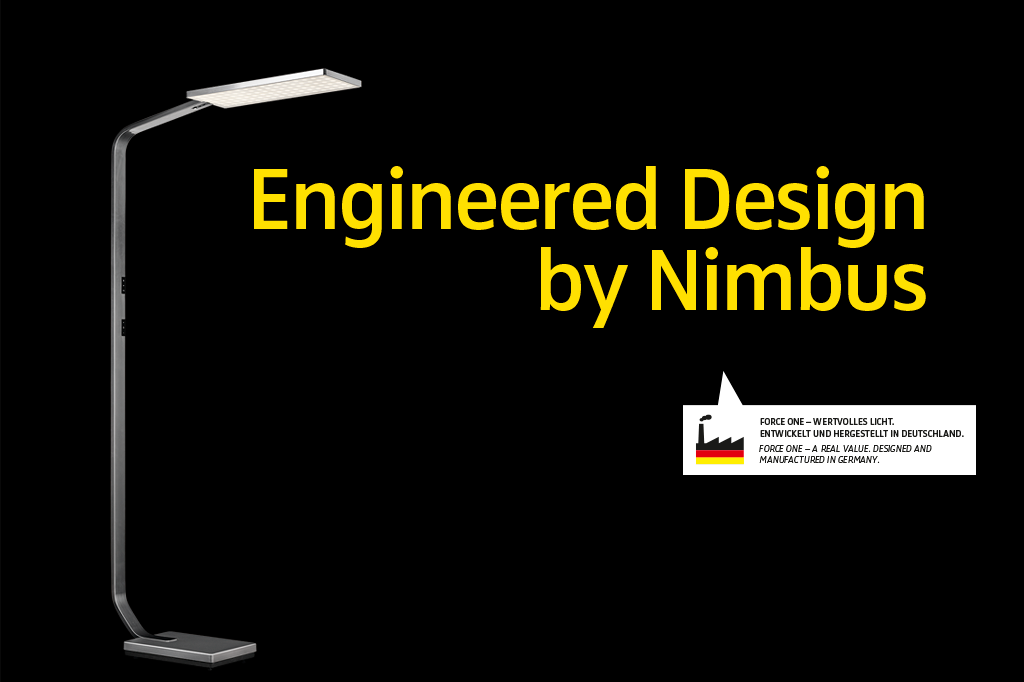
Manufactured in Stuttgart/Germany
Its name is as striking as its shape: FORCE ONE. When you see and use it for the first time, everything about it looks carefully conceived. Every detail has its own logic and its elegantly clear contours generate an impression of overall coherence. The crucial innovations of the Force One are perhaps not at all apparent at first glance, but become clear in daily use. Its head projects unusually far over the work surface and its base disappears almost entirely beneath the desk. In order to achieve this, the designer Rupert Kopp integrated the technical units into the base although they are usually located in the head of luminaires. This made it possible to create an extremely thin head only 20 millimetres thick. The result is uniform, large-surface illumination of the work area. Thanks to its thoroughly thought-out details and its slim silhouette, the Force One exudes an elegance that endows it with a powerful aesthetic presence, irrespective of the angle from which you look at it.
BY THE WAY: There are two versions of the Force One (one with 6,246 lumens and a “Power” version with 8,472 lumens) and it is available with three different surfaces: anodised aluminium, aluminium brilliant white and aluminium with a natural polished finish.
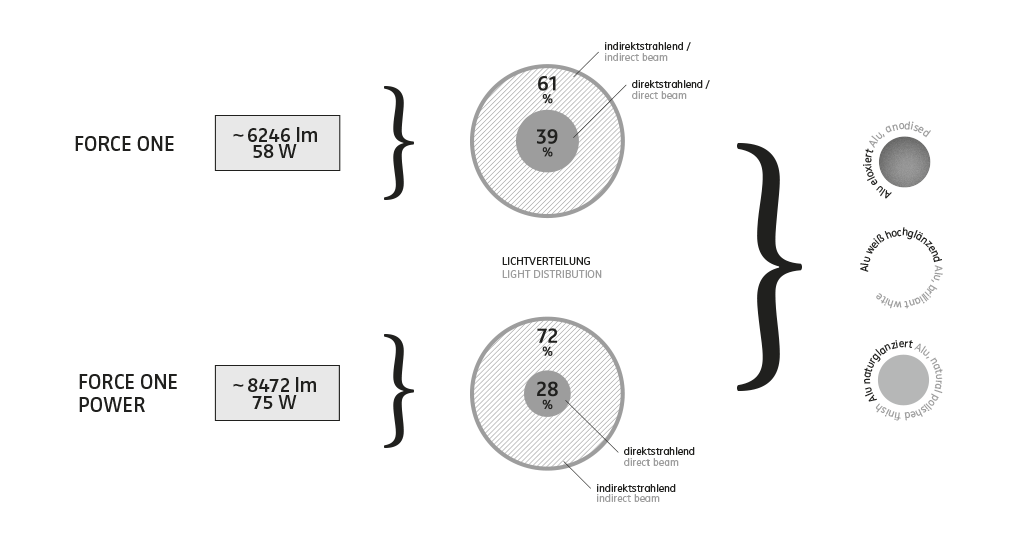
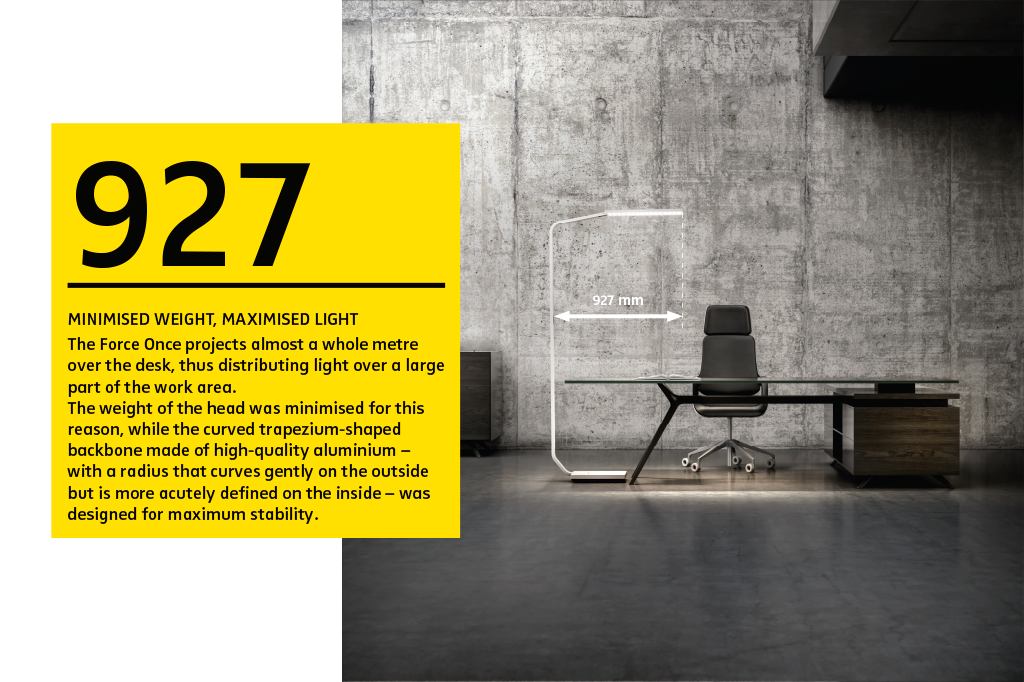
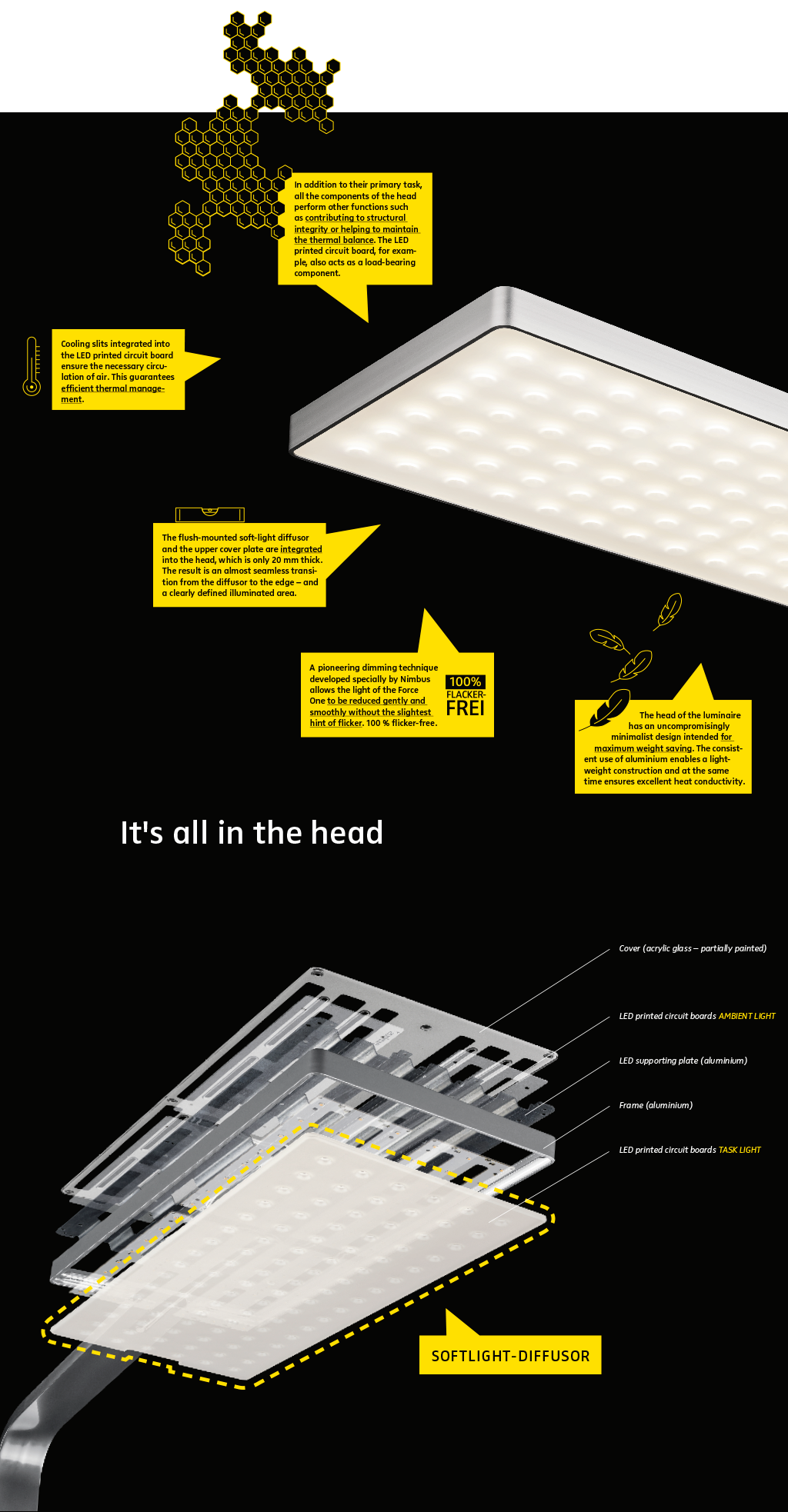
Task Light & Ambient Light
The development of pioneering light products presupposes a new definition of how we understand light. This is also reflected in the Force One luminaire with its engineered design. The downwardly directed task light (direct light) and the ambient light directed upwards (indirect light) can be switched separately from each other – a necessary prerequisite for additional energy saving. The direct light is sufficient to illuminate the work area uniformly and efficiently. As an independent source of illumination, the upwardly directed indirect light can be switched on additionally to create the desired lighting mood and level of brightness in the room. In the case of the Force One Power, the indirect light does not need to be supplemented with basic lighting if the spatial and light conditions in the room are suitable. This saves power and money in the long term.
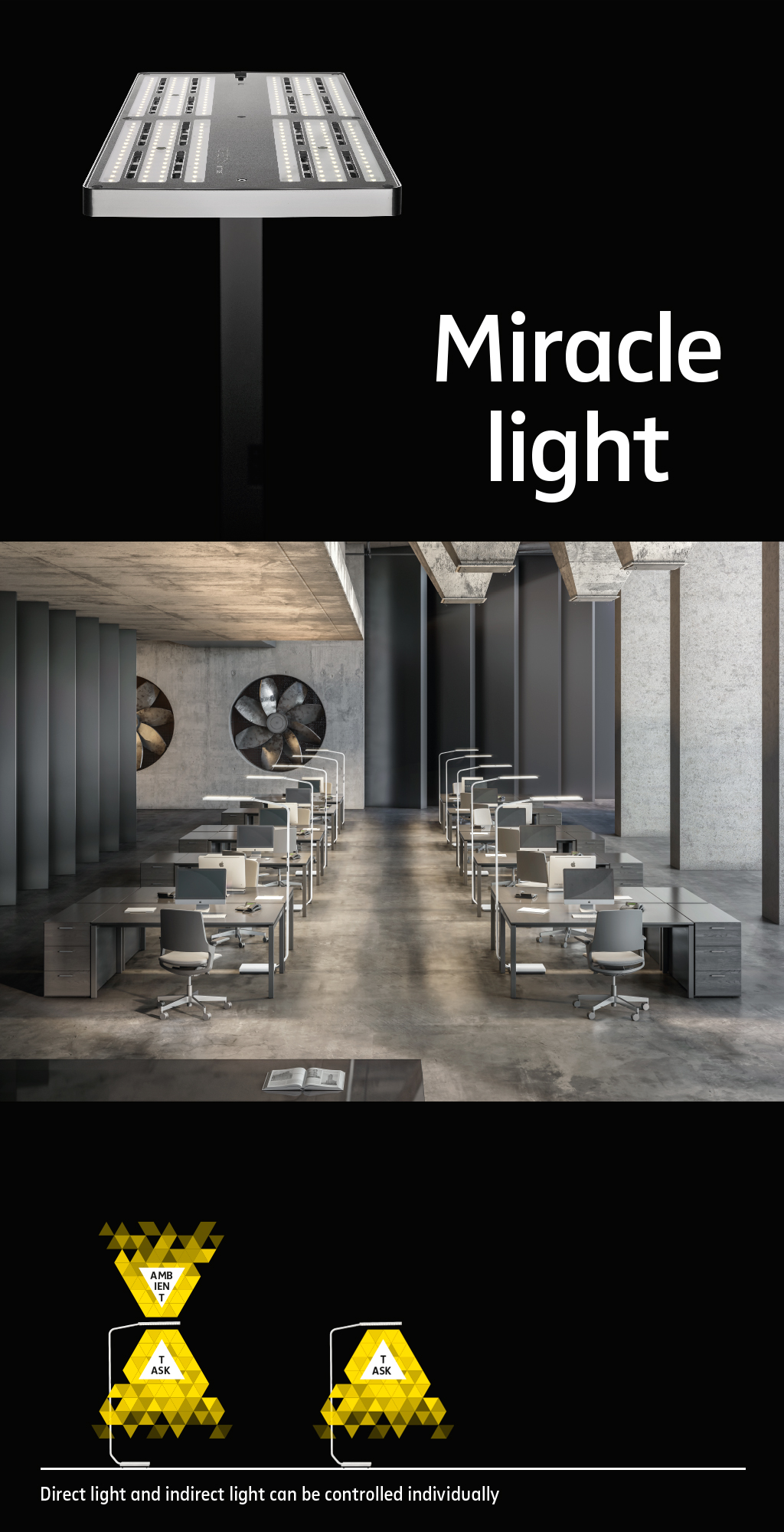
High-tech freak – Noticeable efficiency
The newly developed soft-light diffusor uses translucent acrylic glass in an innovative way: with the precisely placed conical indentations like those which have been used for the Nimbus Modul-Q luminaires for many years now. The deep-drawn light diffusor enables homogeneous lighting and distribution of the light over a large area. The transition from indentation to diffusor surface appears gentler than in the case of the milled Nimbus conical indentations and produces a very pleasant light impression.
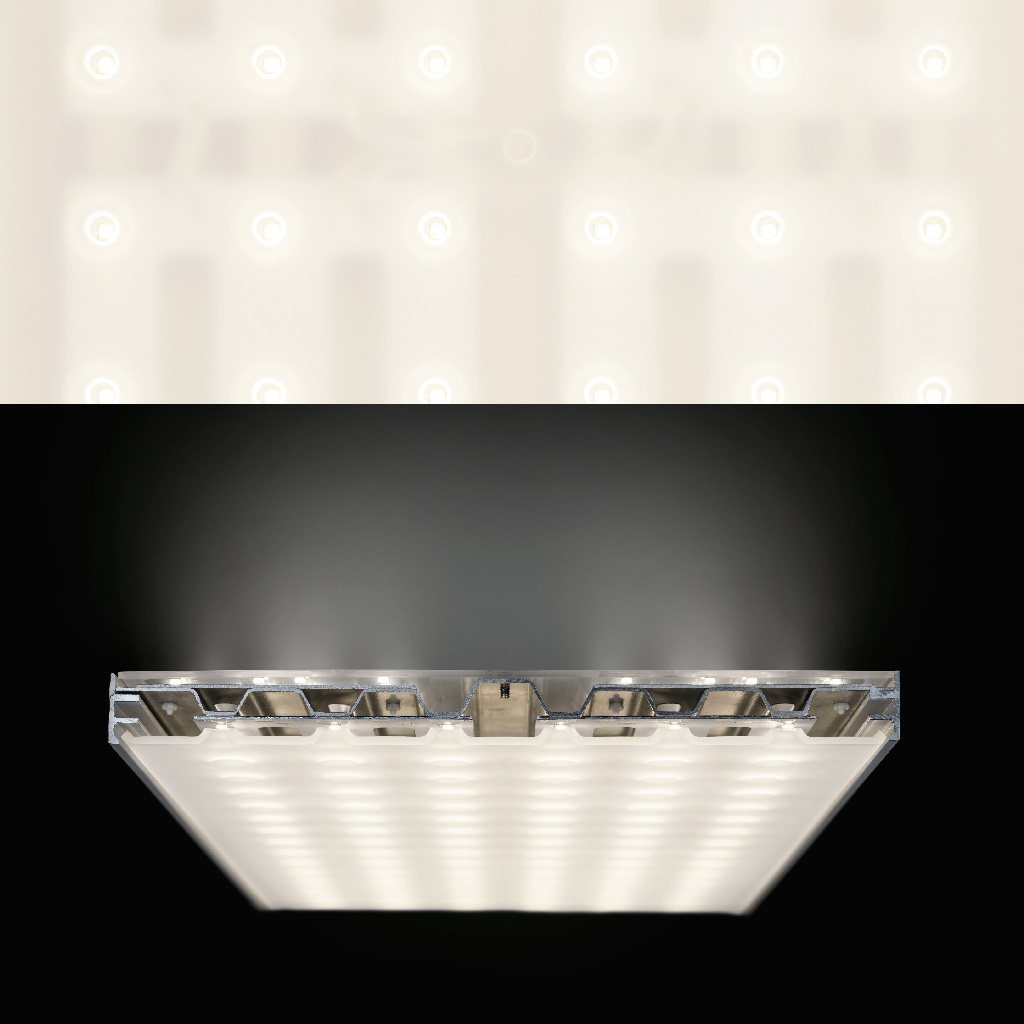
Luminaire base with a brain
Weighting 13.6 kg, the base makes the Force Once very stable and completely disappears underneath the desk. It does not protrude into spaces where people walk or act as a trip hazard. EVEN DESKS WITH U-SHAPED CROSSBARS ARE TAKEN IN STRIDE BY THE FORCE ONE. Due to the angled shape of the trapezoid backbone at the transition from the base, the distance between the inner edge of the backbone and the outer edge of the base is 12 cm. The technical components, which are usually integrated in the head of a luminaire, have been placed in the base element of the Force One. The control electronics, the power electronics, the thermal management system and the test port are all located in the base. In spite of this complex inner life, only low-voltage plugs have to be connected when the luminaire is set up. All the 230 V terminals are pre-installed ex-works. Providing maximum flexibility the 230 V connecting cable can be positioned to lead away from the base in any direction.
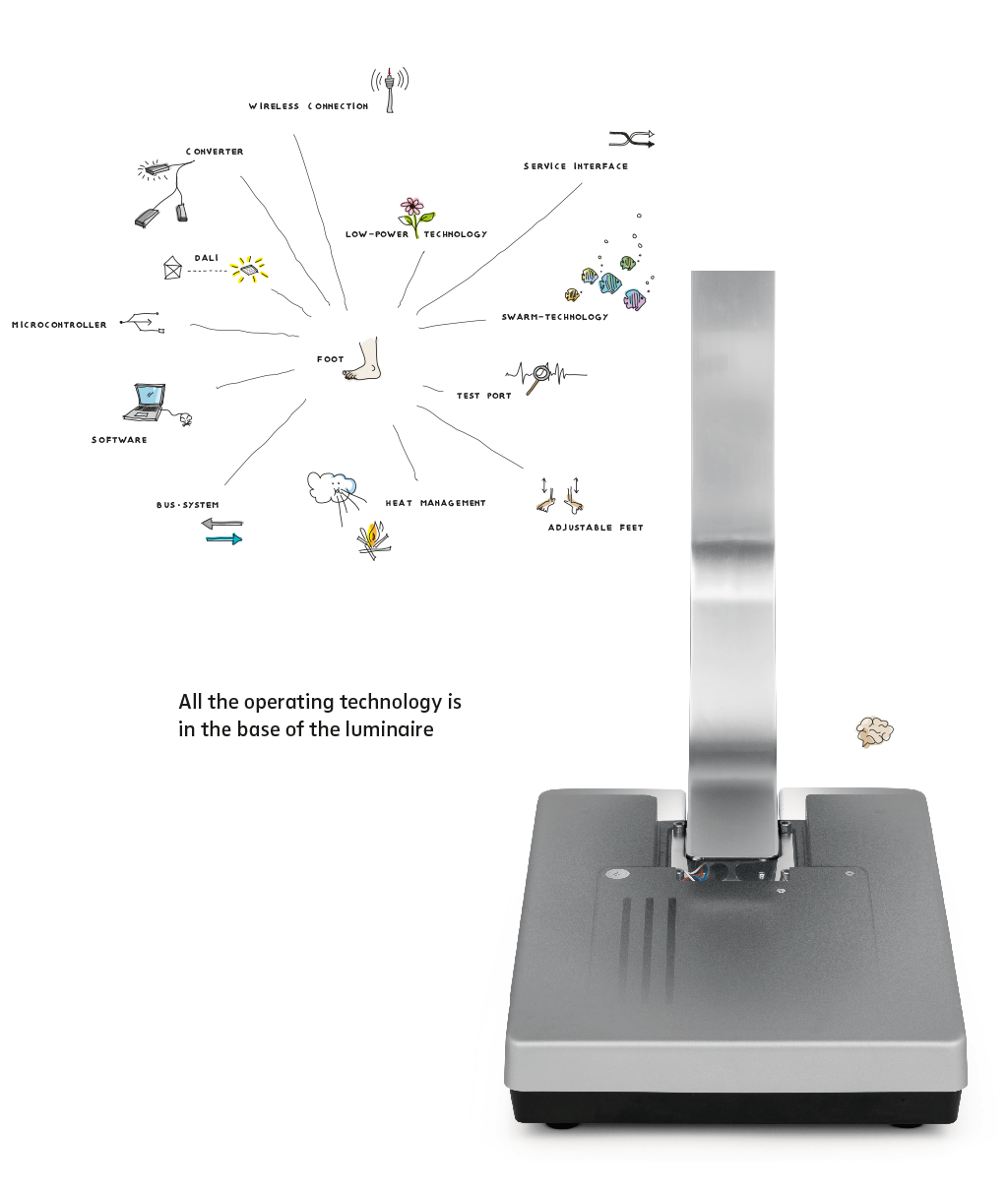
Manual Override
The user can select the Force One’s “fully automatic” option of the PDLS.next function (presence and ambient light sensor) or can individually adjust the luminaire to his personal lighting needs. The two separate, capacitive control units in the backbone can be operated intuitively. The indirect light, the presence detector and the ambient light detector can be switched on or off
simply by pressing a button.
The Force One possesses the extended PDLS.next function, which has already proven its worth for many years in the Office Air LED workplace luminaire. The daylight sensor detects the changing ambient light and adjusts the illumination continuously so that a constant level of brightness is achieved. The user can adjust this at any time to match the level he feels is most pleasant simply by using the dimmer function to increase or decrease the luminaire’s brightness. The automatic brightness controller remains active when this is done. The personally set level is saved even when the luminaire is switched off. The luminaire switches automatically to automatic standby mode when the presence sensor has been deactivated if no motion is detected over a period of 60 minutes.
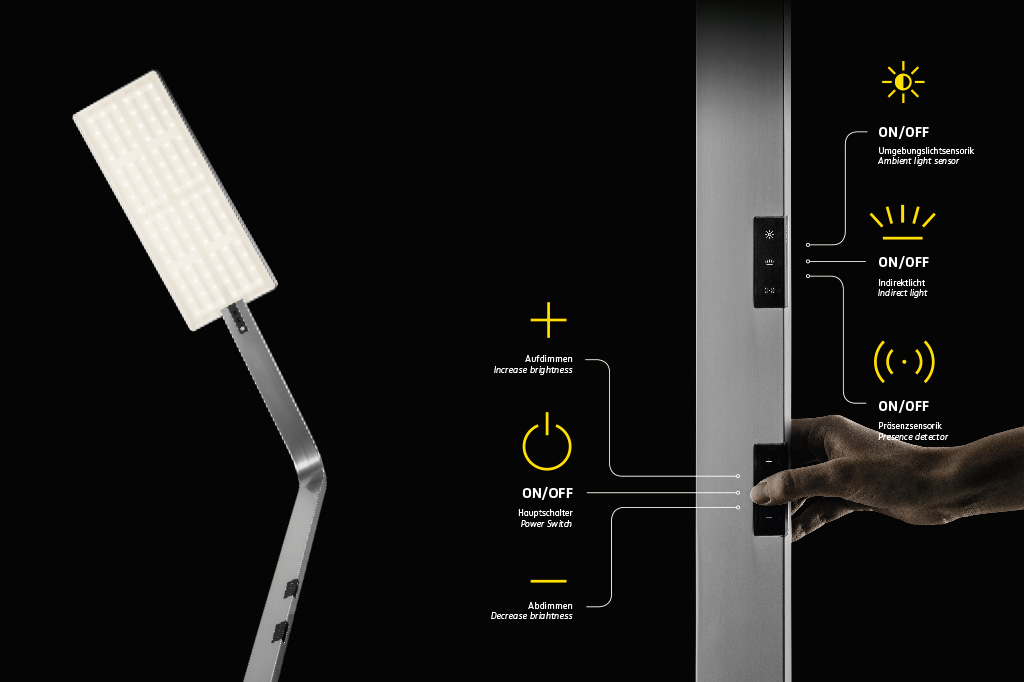
DALI
The Force One cuts a fine figure – and not only as a solo player at the desk; it can also be made into a team player by integrating it into building management systems, something that can be done in no time at all. This is based on the Digital Addressable Lighting Interface (DALI), an established protocol for the control of lighting devices in buildings. DALI can be used to create lighting groups or special light scenarios, which are all controlled centrally. In addition, several luminaires can be switched on and off or dimmed according to need, the time of day, the season of the year or detected movement. However, the user always has the last word; the Force One can be programmed so that only the indirect light is regulated centrally but the user continues to exert control over the light he needs for working.
Cross-linked
If you do not wish to install a building management system or you want to equip an existing office with floor-standing luminaires for the workplace but nevertheless have intelligent group control functions, the Force One is still the right choice for your needs. The reason is that it can communicate with neighbouring luminaires and other luminaires in the system wirelessly (so-called swarm technology). The result is an intelligent lighting network. Special lighting scenarios and groups can be set up and controlled by means of an intuitively usable app solution or a web interface.
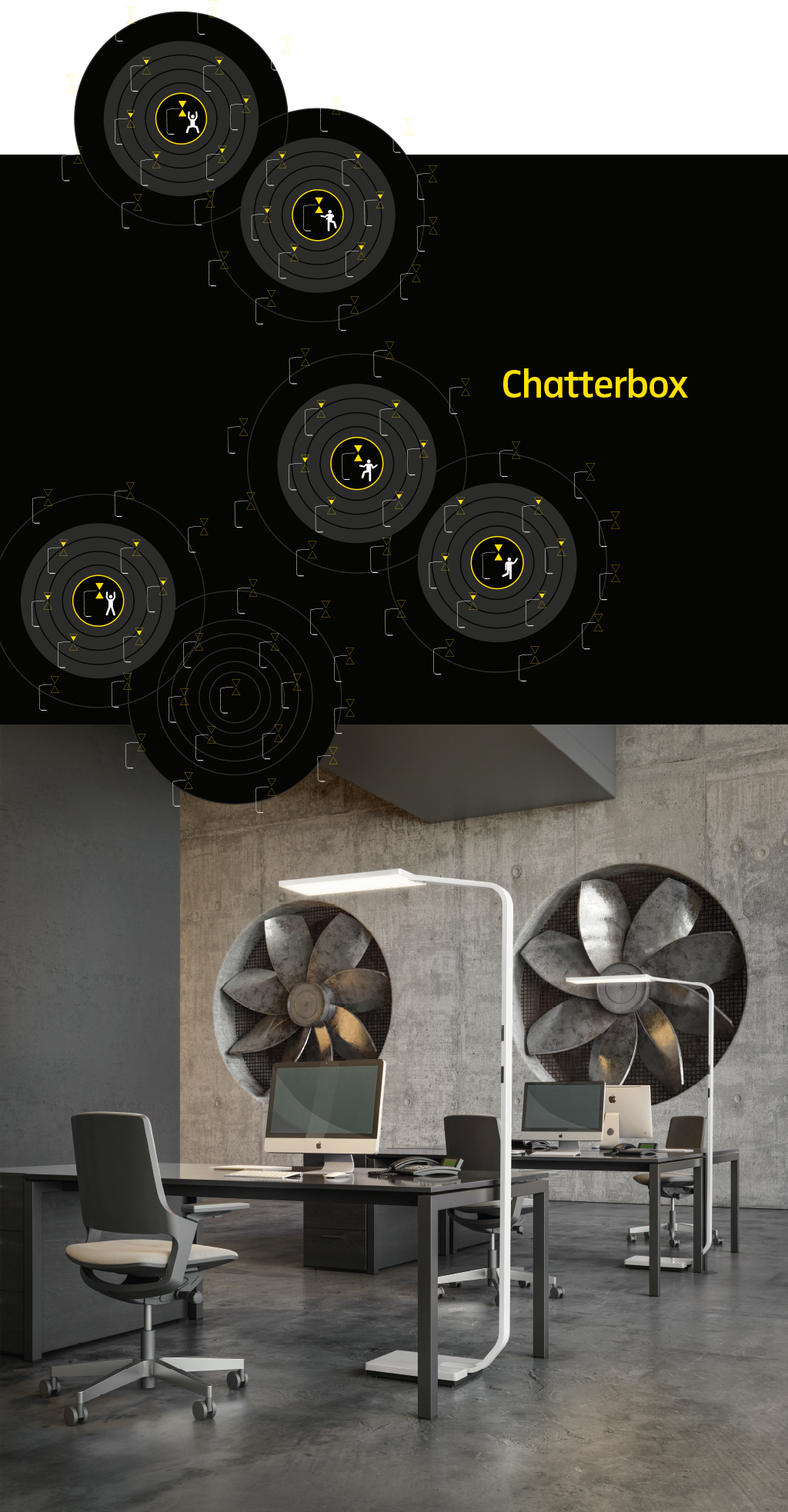
Installation
A thoroughly thought-out design:
No other high-end floor-standing luminaire for the workplace can be installed as quickly as the Force One. Innovative plug-in connections and only six screws – that’s all, apart from a few manual adjustments. After a mere five minutes or so, it can be put to use at your workplace. Four height-adjustable nodules on the base make it possible to compensate for any unevenness of the floor and align the luminaire exactly according to your needs.
